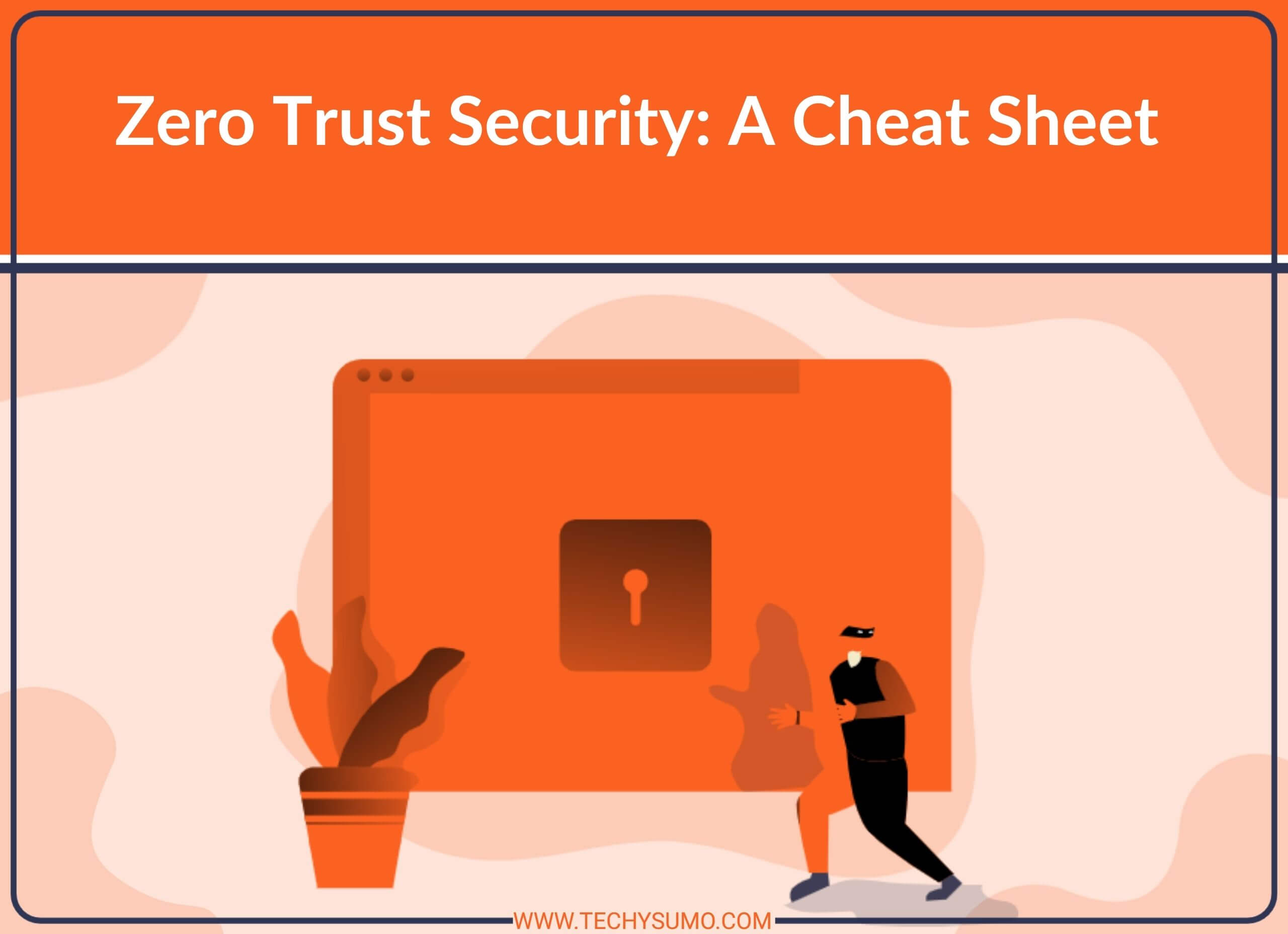Being extra cautious about cybersecurity is actually a good thing, and more than likely that’s why you’re here. You looked up enough to know that Zero Trust is the thing you need to ensure complete network security.
But now, the question arises; what exactly is a Zero Trust model, and how can you have one in the right way? You’ve already done the best thing for your corporate network, so we got you covered for the rest. Check out this comprehensive cheat sheet for Zero Trust security.
Table of Contents
Zero Trust Security In A Nutshell
Zero Trust was introduced in 2010 and since then, it’s one of the most favorable cybersecurity models out there. This model believes in “never trust, always verify,” meaning that the users and devices within the network are considered to be security threats.
This model consists of continuous verification and access control techniques that provide complete network protection. The Zero Trust paradigm rejects implicit trust and treats the users as if they were never accepted into the network. Both outside and inside the network are monitored closely and constantly.
By enforcing repetitious verification in each step, the Zero Trust model ensures no insider data breach is happening. As this system doesn’t trust anyone or anything, your network is always ready for potential cyberattacks.
In short, the Zero Trust model is a collection of policies that put validation and authentication first and eliminate implicit trust on private networks.
How To Implement A Zero Trust Security Model?
1-) Defining The Network Surface And Users
Zero Trust security is a cloud-first model designed to protect business networks from the growing dangers of cloud-based services and remote work. This is one of the best advantages of the model as it facilitates its implementation.
You first need to recognize the potential attack surface and every user on the network. Whether your end-users are working in physical offices or remotely doesn’t matter at all, you can still implement this system.
2-) Choosing A Zero Trust Solution
After you do all these, the actual Zero Trust architecture process begins. Luckily, since this is a cloud-first model, you can get help from VPN providers.
Any Zero Trust model requires verification and network segmentation services, and VPN vendors can provide you with them. Instead of doing it yourself, choose a service provider to get it all from the same source.
3-) Zero Trust Model Provider Suggestion
When choosing your VPN provider for Zero Trust, make sure it’s one of the well-known ones. Some of them have more diversified servers and a wider range of security services than others.
It’s always good to go with a proven option when it comes to cybersecurity.
Benefits Of Zero Trust Security
Zero Trust security model is a comprehensive approach acknowledged by the cybersecurity centers of governments, the first of which is NCSC of the UK.
It’s believed to cover all the data protection needs of companies, and here are some benefits of the model.
1-) Full Control Over Network Access
The Zero Trust security model offers granular security by allowing the network admins to decide who can access what.
You can easily segment your network and specify individual access levels. This will ensure that sensitive data is not available to everybody on the network.
2-) Eliminate Insider Threats
According to Cyber Security Insiders’ report, almost half of the organizations were not able to detect insider threats until the data was already stolen. That’s why the Zero Trust model prioritizes inside security.
This model ensures that unauthorized personnel can’t access sensitive data, and it also takes measures against threats like device theft by verifying user identity at each step on the network.
3-) Secure Remote Access
The remote work model is now preferred by most web-based businesses. But one of the main concerns about it is security. Providing secure yet fast remote access is not always achievable.
Since the Zero Trust model mostly relies on cloud-based services, it offers network security regardless of location. Additionally, by adopting identity-based verification methods, it is applicable for public Wi-Fi users and personal employee devices.
Takeaways
The Zero Trust security model is a modern and holistic approach to cybersecurity. But like all new things, Zero Trust might look a little too complicated to implement at first sight.
But the years with increasing demand for Zero Trust models taught us significant experiences and great practices. Not to mention the growing numbers of Zero Trust solutions on the VPN market.
We hope this quick cheat sheet helps you in your journey toward a better, safer, and more user-friendly corporate network. Remember that keeping up with the trends is crucial in cybersecurity, and Zero Trust is the latest trend.
Also, read Protecting Yourself From Cyber Attacks And Data Loss – 7 Ways.



